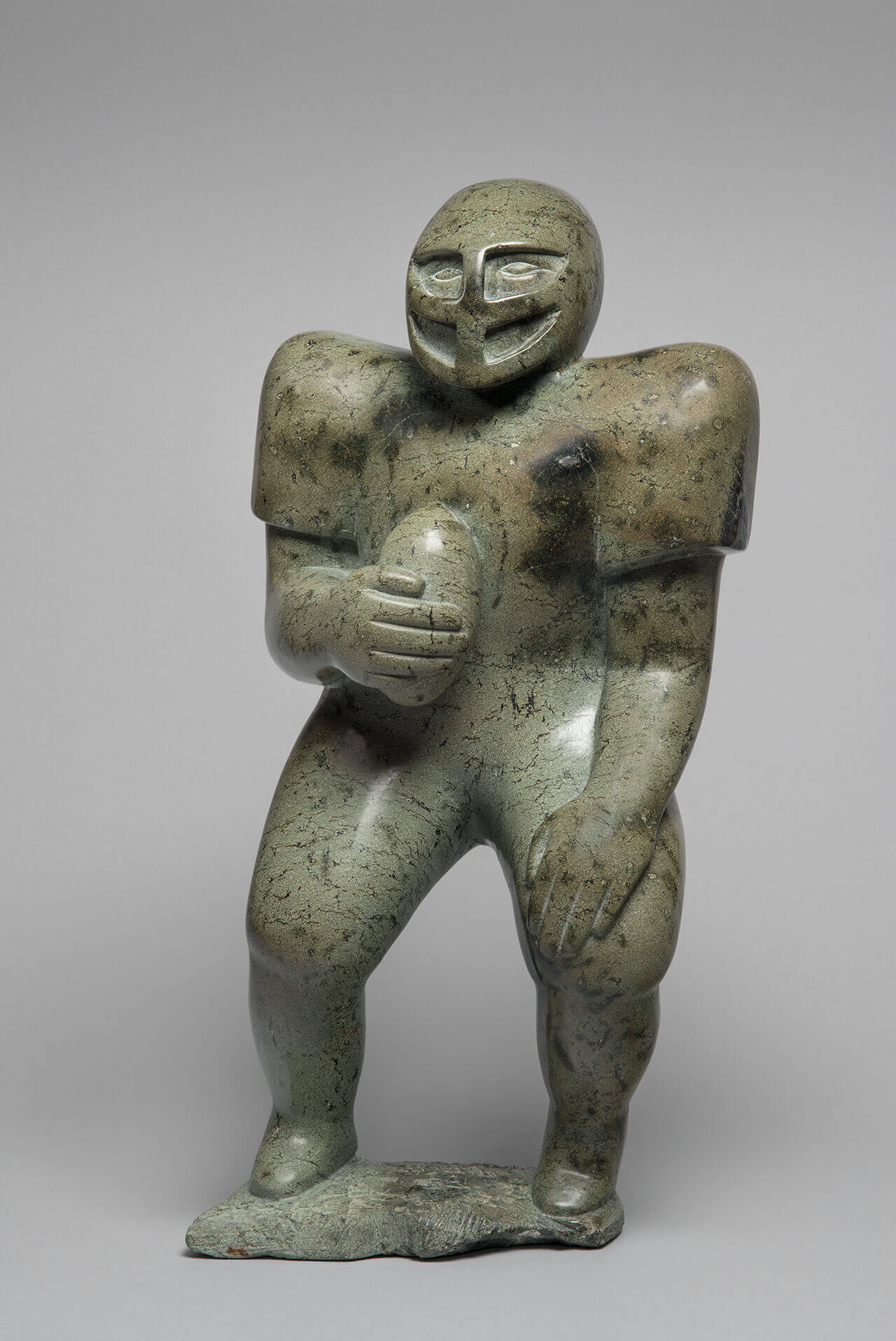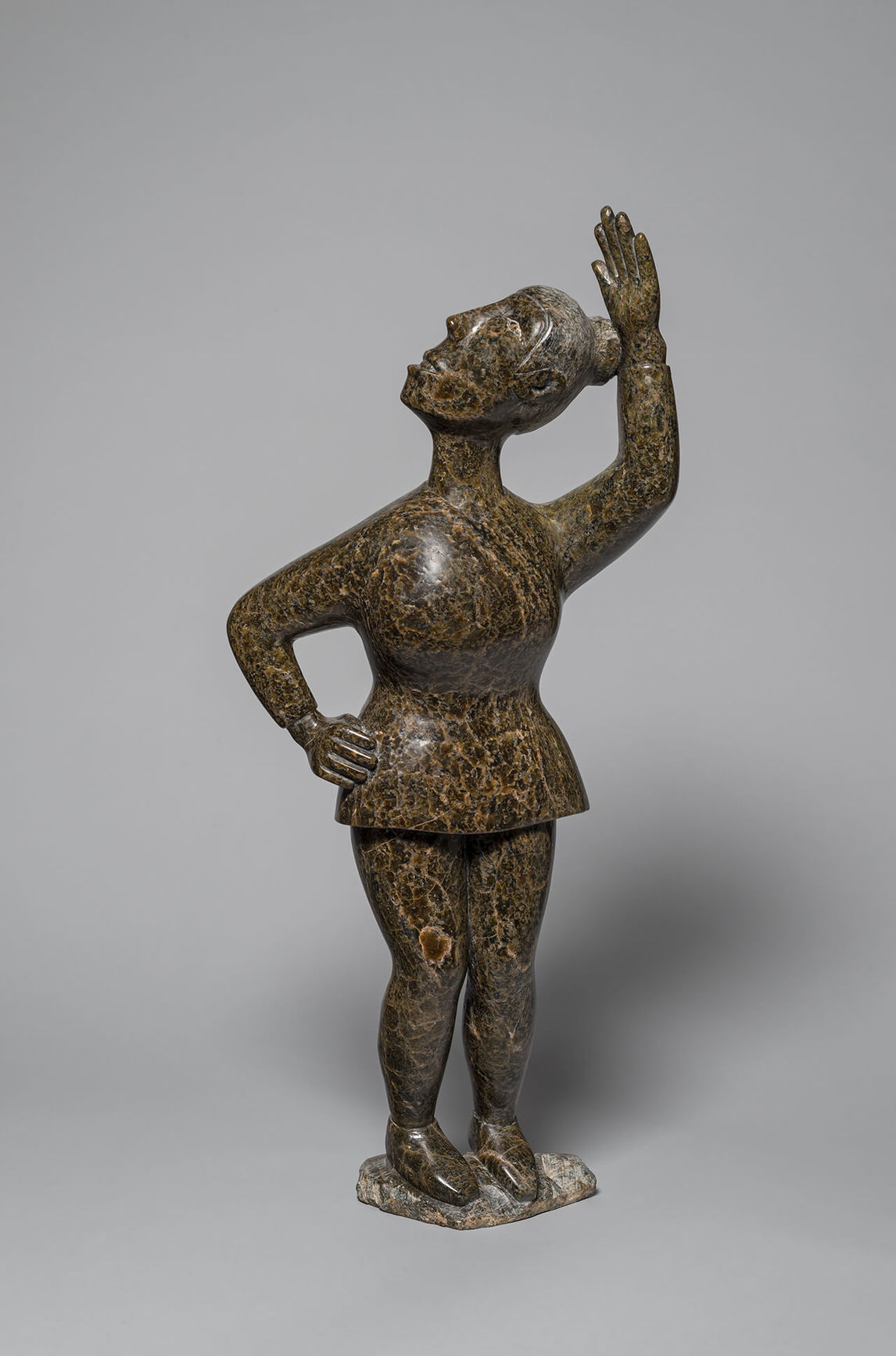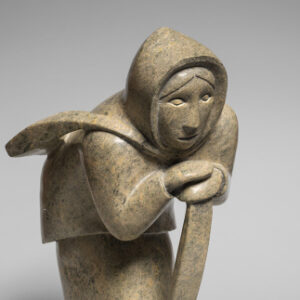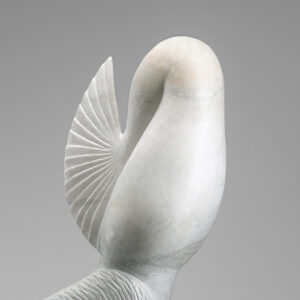Football Player 1981

Oviloo Tunnillie, Football Player, 1981
Serpentinite (Tatsiituq), 52 x 29 x 17 cm
Government of Nunavut’s Fine Art Collection; on long-term loan to the Winnipeg Art Gallery
In the early 1980s Oviloo Tunnillie’s work began to incorporate some decidedly untraditional subjects. In 1981 she carved two helmeted football players. The work was an important precursor to Oviloo’s later sculptures in the 1990s, such as Woman Thinking, 1996, which blur cultural distinctions, no longer showing people in fur clothing and pursuing a life of hunting and fishing. Football Player pointed to her interest in providing a more contemporary representation of Inuit life and art.
Her husband, Iyola Tunnillie (b.1952), explained that Oviloo enjoyed watching football games on television. The two figures have a similar pose, each using one hand to hold a football to the chest. With faces hidden behind helmets and bulky shoulder pads, they seem barely human—as they would have appeared from the distance created by the television cameras. The only feature to individualize one of the players is the number 87 on the front of his jersey.

Oviloo told curator Odette Leroux that the story of this carving is “about the fact that I can now watch [the football games].” Fascinated whenever the Olympics were televised, she created other athletes, such as Discus Thrower, 1980; Dancer, 1995; Skater, 1998; and Synchronized Swimmer, 1999. Iyola explained that she would make a carving of an athletic figure right after watching it on television.
Oviloo was so excited when she finished her first football player that she made an announcement on the local radio station in Cape Dorset, urging people to go to the West Baffin Eskimo Co-operative to see the sculpture before the Co-op shipped it to its southern marketing agency, Dorset Fine Arts, in Toronto. When the sculpture arrived at the Toronto offices, it drew prompt attention. It was immediately purchased by Inuit Art Section of the federal Department of Indian and Northern Affairs Canada. At that time, Inuit Art Section owned an extensive collection of Inuit art and crafts that dated from the late 1940s and included sculpture, prints, drawings, and wall hangings by the most important artists from virtually every Inuit community in Canada. This collection was used to promote Inuit art nationally and internationally. In 1989 Inuit Art Section’s collection was deaccessioned and dispersed to other museums and Inuit-owned collections. Football Player was gifted to the collection of the Inuit Cultural Institute in Arviat. This collection later became part of the Government of Nunavut Fine Art Collection, now on long-term loan to the Winnipeg Art Gallery (WAG).
In 1994, the work was exhibited in Inuit Women Artists: Voices from Cape Dorset at the Canadian Museum of Civilization. It has been on display in two major WAG exhibitions, Our Land (2015) and Oviloo Tunnillie: A Woman’s Story in Stone (2016), where it continually drew comment from viewers for its unconventional subject matter.

 About the Author
About the Author
 More Online Art Books
More Online Art Books
 Acknowledgements
Acknowledgements